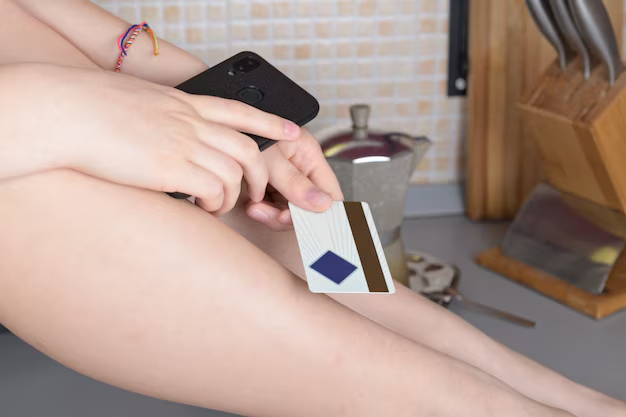Recognizing the Signs: Understanding the Quiet Symptoms of Skin Cancer
When it comes to health, few things are as concerning as the possibility of cancer. However, early detection is key to managing and treating potential health risks, including skin cancer. This article will help you learn to identify potential signs and symptoms of skin cancer, enhancing your understanding of what to watch for and when to seek a professional opinion.
What Is Skin Cancer?
Skin cancer is a common type of cancer that forms in the cells of the skin. It occurs when mutations in skin cells lead to uncontrolled cell growth. There are three primary types of skin cancer: basal cell carcinoma, squamous cell carcinoma, and melanoma. Each type presents unique symptoms and differs in severity and treatment options.
Basal Cell Carcinoma
Basal cell carcinoma is the most common form of skin cancer and typically appears in areas exposed to the sun, such as the face and neck. It often manifests as a slightly transparent bump or a waxy lesion.
Squamous Cell Carcinoma
Squamous cell carcinoma is the second most prevalent skin cancer and often develops on sun-exposed areas like the ears, face, and hands. It may present as a firm red nodule or a flat lesion with a scaly crust.
Melanoma
Melanoma is less common but more dangerous than other types. It can develop anywhere on the body and is known for rapidly spreading to other organs if not detected early. Melanoma often appears as a large brownish spot with darker speckles or a mole that changes in color, size, or feel.
Signs and Symptoms
Understanding the ABCDE Rule
One of the most effective ways to identify melanoma is by using the ABCDE rule. This guide can help you spot suspicious changes in moles or skin growths:
- Asymmetry: Half of the mole doesn't match the other half.
- Border: The edges are blurred, irregular, or notched.
- Color: There's an uneven distribution of color with shades of black, brown, tan, or even white, red, or blue.
- Diameter: The spot is larger than 6mm (about the size of a pencil eraser).
- Evolving: The mole changes over time in size, shape, or color.
Other Symptoms to Watch
Beyond the ABCDE rule, there are other signs to note that may indicate skin cancer:
- Unhealing sores or ulcers
- New growths or moles
- Persistent itching, tenderness, or pain
- Changes in skin color or texture
- Bleeding or oozing spots
Factors That Increase Risk
While anyone can develop skin cancer, certain factors increase your risk:
- Sun Exposure: Consistent exposure to UV rays through sunlight or tanning beds significantly raises skin cancer risk.
- Fair Skin: Less melanin means less protection from harmful UV rays.
- Family History: A family history of skin cancer increases your likelihood of developing it too.
- Age: The risk of skin cancer increases with age.
- Immune System Suppression: Compromised immune systems can't fight off cancerous cells as effectively.
Preventative Measures
So, what can you do to lower your risk?
Sun Protection
- Wear broad-spectrum sunscreen with at least SPF 30 daily.
- Reapply sunscreen every two hours and after swimming or sweating.
- Wear protective clothing, a wide-brimmed hat, and UV-blocking sunglasses.
Self-Examinations
Regular self-examinations are crucial. Here's how you can effectively perform them:
- Stand in front of a full-length mirror.
- Examine your face, ears, neck, chest, and abdomen.
- Use a handheld mirror to check your back, the backs of your legs, and your scalp.
- Don’t forget hidden areas like under your nails, soles of your feet, and between your toes.
Professional Skin Checks
Scheduling regular checks with a dermatologist, especially if you have high-risk factors, ensures changes or abnormalities are caught early.
When to Consult a Healthcare Professional
If you notice any concerning changes, it's essential not to delay consultation. Early diagnosis can vastly improve treatment outcomes. A dermatologist can conduct a more comprehensive examination and, if needed, perform a biopsy to determine if a suspicious spot is cancerous.
The Psychological Impact
It's important to acknowledge the stress and fear that comes with discovering potential signs of skin cancer. Knowing you have support from medical professionals and loved ones is crucial. Keep communication open and remember that you are not alone—many resources and supportive communities are available.
Next Steps
To summarize, vigilance is vital when it comes to skin health. By understanding what to look for, you can take proactive measures to protect your skin.
Key Takeaways & Next Steps 🚀
- Recognize Symptoms: Use the ABCDE rule to check for early signs.
- Assess Risks: Identify if you fall into higher-risk categories.
- Protect Your Skin: Utilize SPF 30+ sunblock and wear protective clothing.
- Self-Check Regularly: Perform frequent self-examinations.
- Seek Regular Professional Checks: Visit a dermatologist annually or as recommended.
- Act Promptly: Early detection and medical advice are crucial.
Your proactive approach today could ensure better outcomes tomorrow. 🌟

Related Articles
- Are Breast Cancer Lumps Painful
- Are Chills a Sign Of Cancer
- Are Colon Spasms a Sign Of Cancer
- Are Lytic Lesions Always Cancer
- Are Polyps Cancer
- Can a Blood Test Detect Cancer
- Can a Ct Scan Detect Cancer
- Can a Dexa Scan Show Cancer
- Can a Gastric Emptying Scan Show Cancer
- Can a Lung Biopsy Cause Cancer To Spread